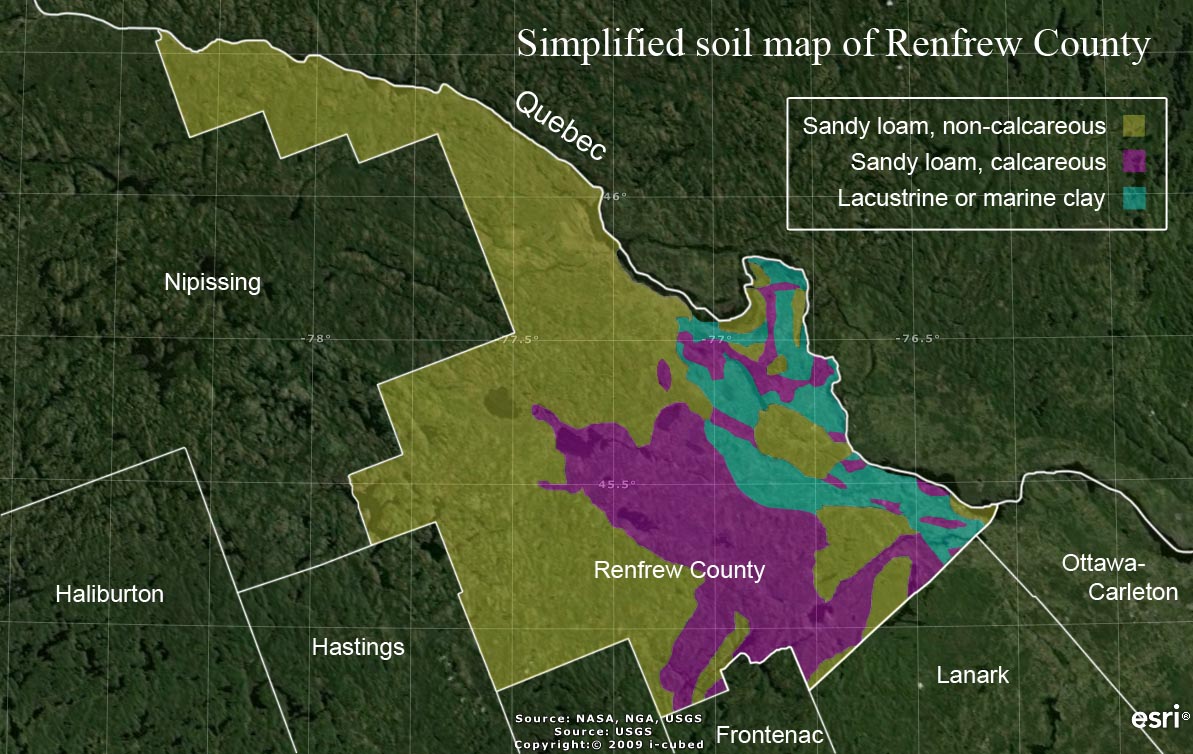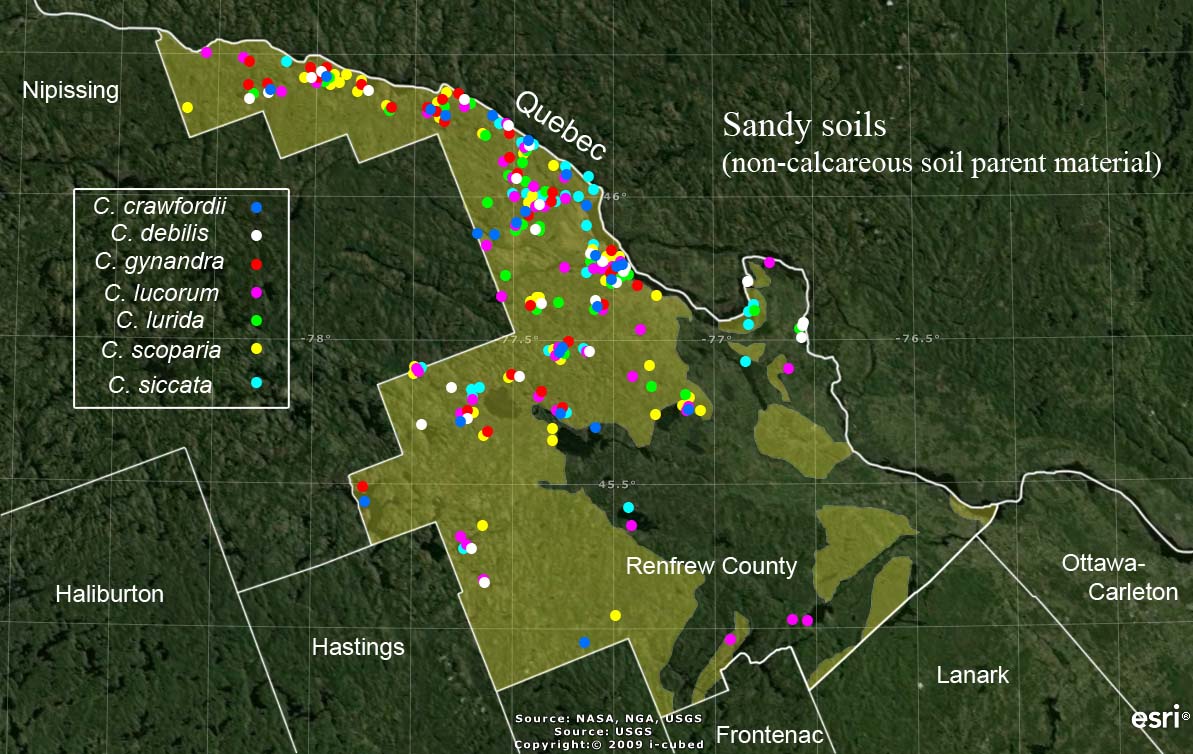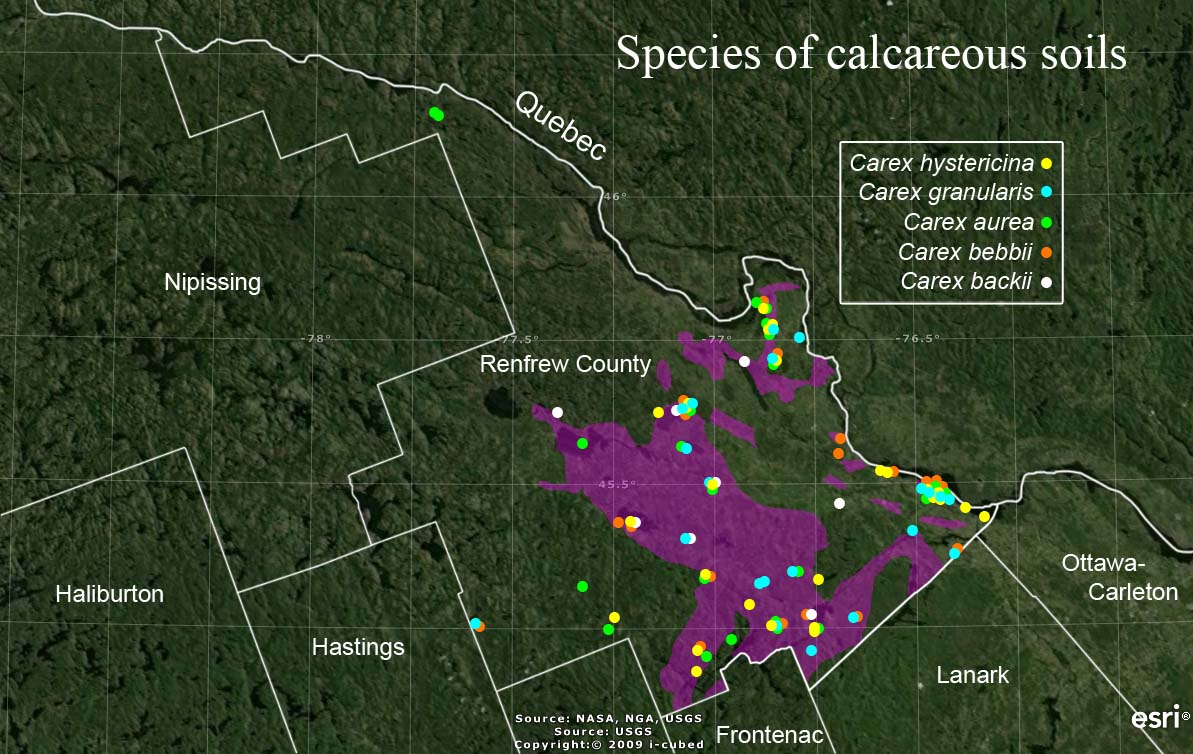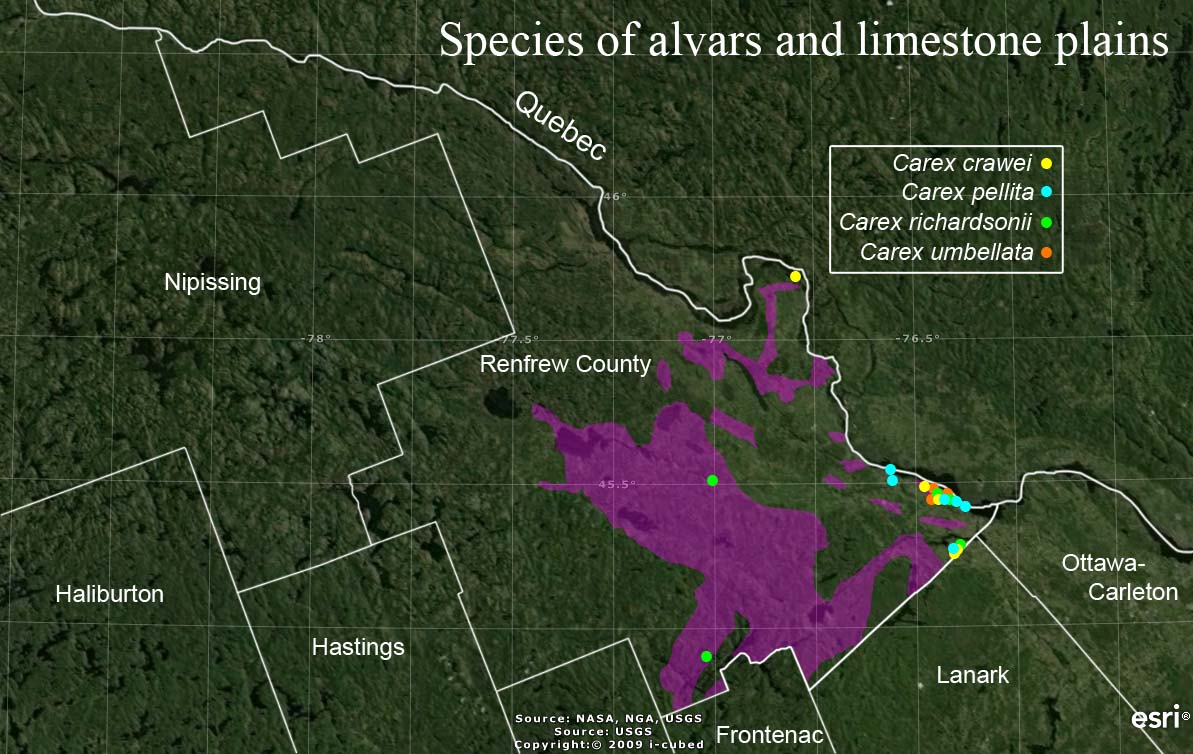Regional Affinities
There are two major physiographic regions recognized in Renfrew County [Gillespie, 1964]. The county is divided north to south, into the Precambrian Uplands (western side) and the Ottawa Valley Lowlands (eastern side). The Precambrian Upland is dominated by very sandy soils of non-calcareous origin. The Ottawa Valley Lowlands originated from down-faulted rock formations in which marine sediments have accumulated. Mixed rock strata and limestone beds are also common in the Ottawa Valley Lowlands providing soils of calcareous origin. The figure below shows a simplified soil map for the county. Details can be found in [Gillespie, 1964] along with its accompanying soil maps.

Mapping of the CAN and DAO records and my personal observations should provide some evidence of any regional affinities for the species. Unfortunately, the sample size is quite small and collections are not very uniform across the county. However, there are several cases where the species appear to be isolated to specific regions or physiography.
Some Carex species known to favor sandy acidic soils are: C. crawfordii, C. debilis, C. gynandra, C. lucorum, C. lurida, C. scoparia and C. siccata. The recorded occurrences on the map below show that these species are concentrated and abundant in the western portion of the county.

The records for several Carex species known to favor calcareous soils, C. aurea, C. backii, C. bebbii, C. granularis and C. hystericina, are concentrated in the calcareous regions of the Ottawa Valley Lowlands. These and other calciphiles can also be found occasionally in the appropriate isolated microhabitats of the Precambrian uplands. The map below shows the verified occurrences for these five species in Renfrew County.

There are four Carex species that are mostly restricted to alvars in Renfrew County [Catling, 1995]. Carex crawei, Carex pellita, C. richardsonii and C. umbellata are most frequently reported from the extended Braeside alvar and the Clay Bank alvar but they also have occurrences outside of these defined alvars. The verified occurrences of these species are shown in the map below.

Individual occurrence maps for each species are detailed in the species pages of this document.
References
Gillespie, J.E., Wicklund, R.E., Mathews, B.C. 1964, Soil Survey of Renfrew County: Report No. 37 of the Ontario Soil Survey, Canadian Department of Agriculture and Ontario Department of Agriculture. Can be found at:http://sis.agr.gc.ca/cansis/publications/surveys/on/index.html.
Catling, Paul M., and Vivian R. Brownell. 1995, A review of the alvars of the Great Lakes region: Distribution, floristic composition, biogeography, and protection. Canadian Field Naturalist 109(2), 143-171.